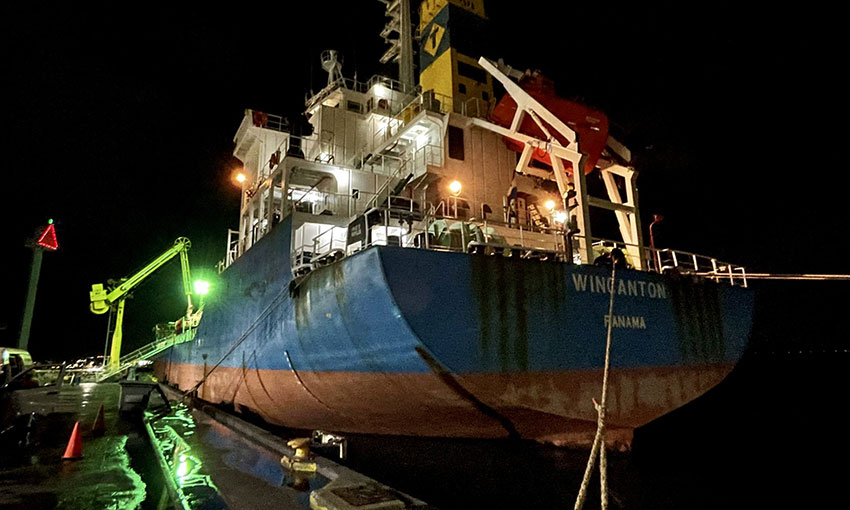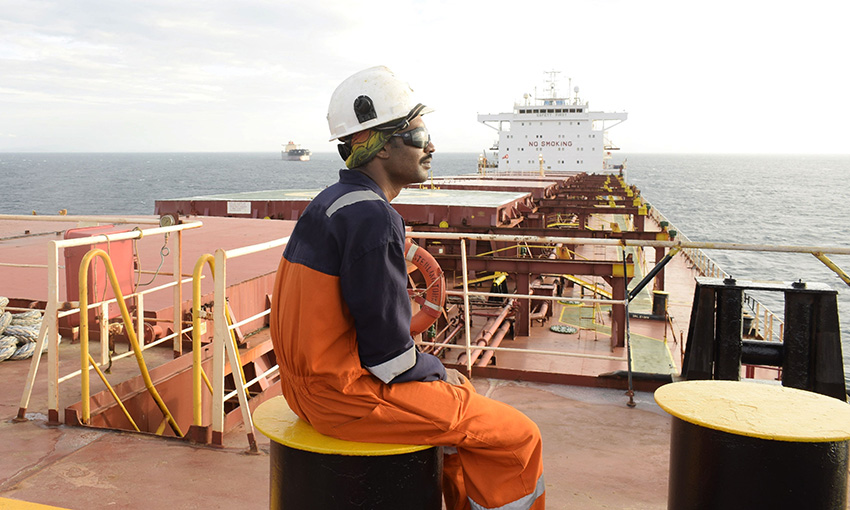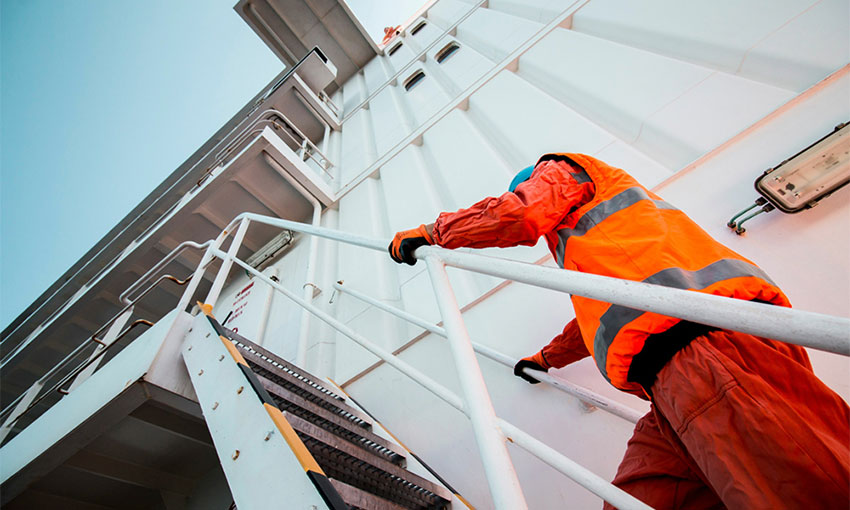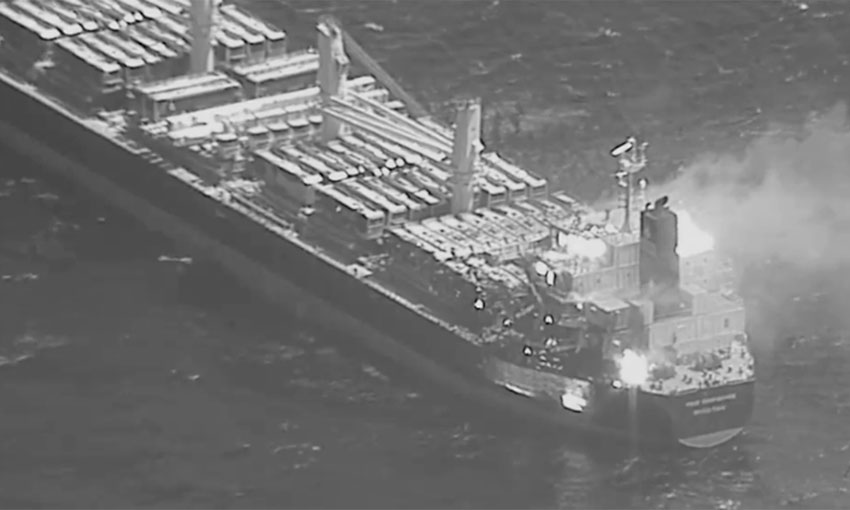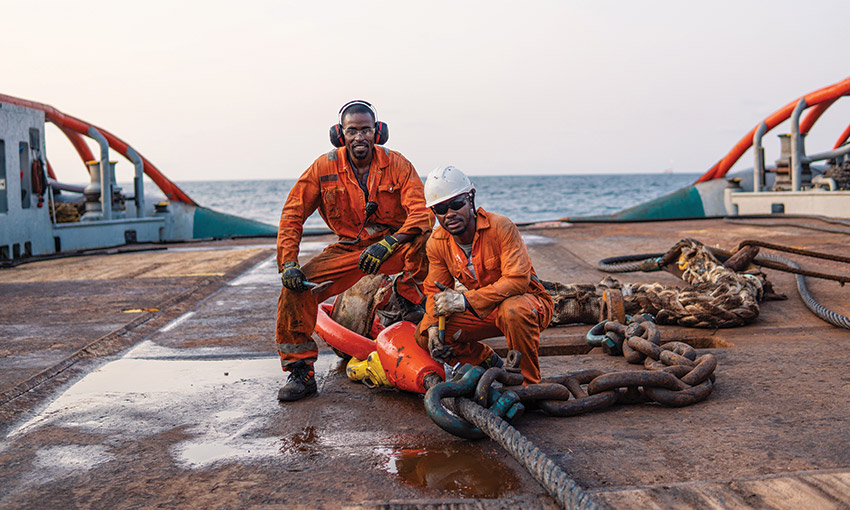FOLLOWING the vaccination of the Peruvian crew of a bulk carrier, Mission to Seafarers Newcastle is reviewing the outcomes of the vaccination process to set an example for similar procedures in other Australian ports.
The 15 crewmembers were nearing 12 months on board the Wincanton, which had been sailing repeatedly between Newcastle and Gladstone during the pandemic.
MTS Newcastle chaplain Matthew Couch told DCN the vaccine is the difference between the seafarers being stranded in Australia and returning home to Peru.
In conversation with DCN, Mr Couch recalled the night the team administered the first doses with the help of a medically trained board member in hope that it may set a precedent for further vaccinations of international seafarers.
The below conversation has been edited for length and clarity.
What were the logistics of vaccinating the crewmembers?
In the days leading up to the Wincanton entering port, co-ordination of how the vaccinations were to occur within the working parameters of port operations and health regulations needed to be arranged. This saw discussions taking place between Port of Newcastle, NSW Health, and Mission to Seafarers.
Standing health regulations meant the administration of the vaccines needed to take place outside, within 13 metres of the vessel.
The limited availability of the doctor meant the vaccinations had to be scheduled at night and, with adverse weather conditions to contend with, Mission to Seafarers did the best they could to use their bus as a shelter for the actual administrations of the vaccines.
However, the seafarers had to spend their 15-minute observation period on outdoor chairs, fully exposed to the weather.
Despite the obstacles, we had 15 happy and very grateful seafarers at the end of it all.
What was the process in relation to official health procedures and documentation?
While the actual vaccinations happened within a couple of hours, there was a substantial amount of work in the weeks leading up to it.
Seafarers have no access to Medicare or myGov, so we needed assistance from Services Australia to register each seafarer with an Individual Healthcare Identifier.
This meant having special permission granted for the Master to certify copies of the crew’s passports, and for the Chief Officer to certify the Master’s passport.
Once the IHI numbers had been obtained, vaccination consent forms needed to be completed ahead of the administration of the vaccine, with Mission to Seafarers and the agent – in this case, Inchcape – facilitating this with the Wincanton.
Would the crew have been able to return to Peru without being vaccinated?
If we had not been successful in vaccinating the off-signing crew, they would have either remained stranded in Australia, no longer as seafarers but as refugees; or would have been forced to remain on board, an outcome everyone involved was determined to avoid.
We are working on the next steps for both the off-signing and on-signing crews. The off-signing crew received AstraZeneca and are able to return to Peru with their first dose, provided they return negative PCR tests.
The logistics of vaccinating the on-signing crew is currently in the works.
How can this achievement set a precedent for further seafarer vaccinations around Australia?
This was an important test case for future vaccinations.
In partnership with NSW Health, Mission to Seafarers will now be reviewing the learning outcomes of this case and fine-tuning the process to develop a repeatable and reliable set of procedures, which we can then consider trialling elsewhere.
As a national organisation with the facilities, capacity, and ability to access wharves owned and operated by multiple stakeholders, Mission to Seafarers is in an excellent position to facilitate and support state and federal agencies to develop and deliver seafarer vaccination programs in ports around the country.
It’s still one step at a time, but we are very grateful to be in a position to positively impact the lives of so many seafarers.
Like many others around the country, we have for too long been the ones needing to apologise to seafarers who ask whether they can be vaccinated in Australia. We are excited and hopeful about where this is heading.
Our recent national conference held online saw registrations from 15 countries. As a nation recognised by seafarers around the world for its dedication to seafarer welfare, everyone is interested to see what Australia will do next.
One thing is for sure, we won’t be facing a shortage of demand.

